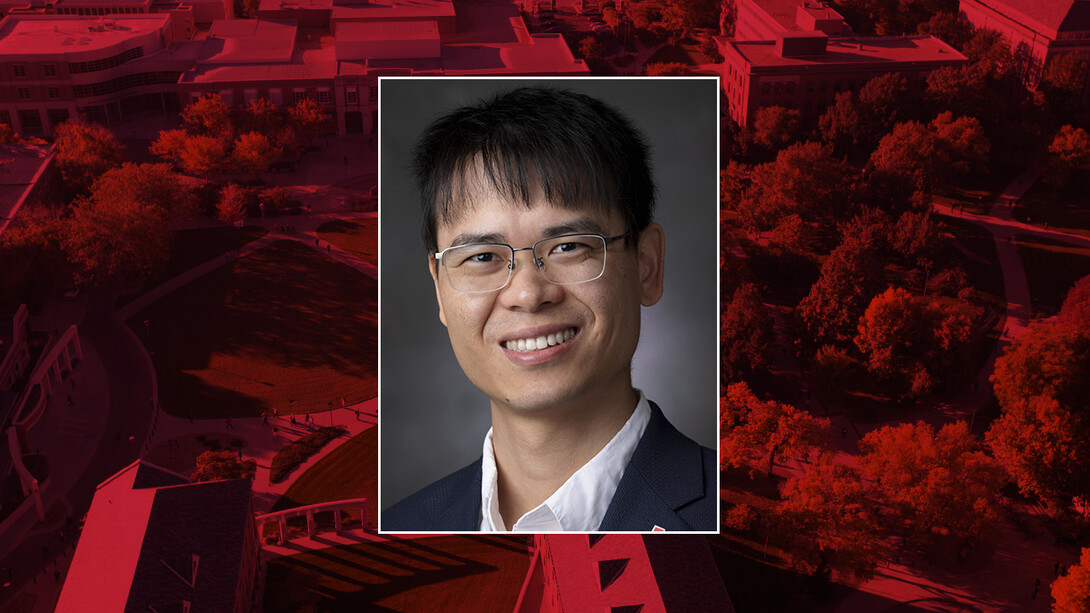
Any way you slice it, technology advancements are changing the way wireless networks are sharing resources with everyday users.
With a new $531,134 grant from the National Science Foundation, Qiang Liu, assistant professor in the School of Computing, is working to develop a new, autonomous and agile wireless network resource allocation method called “slicing-as-a-service.”
Networks already utilize “network slicing,” a technique that ensures wireless network resources are distributed and supported in a flexible and cost-efficient manner. As technology continues to evolve and wireless networks expand the types of applications and devices they serve, the need for more efficient allocation becomes even greater. Providing necessary resources to more dynamic and diverse applications also becomes increasingly more complex and challenging.
“Previously, networks supported users with smartphones and different applications, but now we have more augmented reality devices, autonomous driving cars, and UAVs all connected to the cellular network, and they are quite different in terms of performance requirements,” Liu said. “The challenge is to support them all efficiently.”
Most existing network slicing solutions are coarse-grained and consist of fewer, larger components that cannot tackle more fine-grained network orchestration issues relating to responsiveness, cost-efficiency and autonomy. This ultimately limits broader implementation of network slicing by major service providers.
Liu’s project aims to correct this through slicing-as-a-service, which would automate network slicing and allow mobile applications to be supported at a very low cost. The project would also make network automation solutions more intelligent, dependable, and accessible to a wider range of users.
“The goal is to make it available to everyone and fulfill demands for the individual, not just for the big companies and big players,” Liu said. “Configuring this parameter is quite challenging, because it requires dedicated expertise. We want to make it like a service, and we want to make it autonomous so we don’t need to involve human expertise, which is why we’re calling it ‘slicing-as-a-service.’”
To achieve this, Liu will work to develop “AutoSlicing,” or autonomous network orchestration, through deep reinforcement learning methods that will continually adjust to changes within the network. Changes may include user movement, network traffic fluctuations, or signal transmission obstruction due to buildings or other interfering factors.
“All those dynamics will be automatically learned and reorganized regularly and directly,” Liu said. “We need to make sure that the performance requirements of the user can always be met and that these AI machine learning techniques we develop can adapt.”
Liu plans to achieve this by using augmented network simulators and deep reinforcement learning methods to develop realistic AutoSlicing techniques. Liu will implement and test his techniques on one of his previous initiatives, Husker-Net, the University of Nebraska–Lincoln’s own private 5G network.
Husker-Net is the first private 5G network in the state of Nebraska, and one of the only private 5G university research networks in the country. Liu said he will utilize the network to ensure that the AutoSlicing techniques are functional, streamlined, and most importantly, reliable.
“We need to make sure they are not breaking the network when we are doing this optimization. That's one of the key concerns from industry,” Liu said. “We will validate and test it on a campus scale, which is quite unique in the United States. I think that will also make Husker-Net even more optimized.”
Liu’s AutoSlicing and slicing-as-a-service techniques will provide many benefits to its users, primarily efficiency in both production and cost. It will also provide those benefits to users at multiple levels, including those who previously could not take advantage of them.
“For individuals, we’ll enable this slicing-as-a-service to ordinary people and small businesses, and democratize this to everyone,” Liu said. “Operators can also enjoy higher cost reduction because it makes the network autonomous, so they don’t need as many human resources and can improve the utilization of the network. It's quite beneficial for both parties.”







